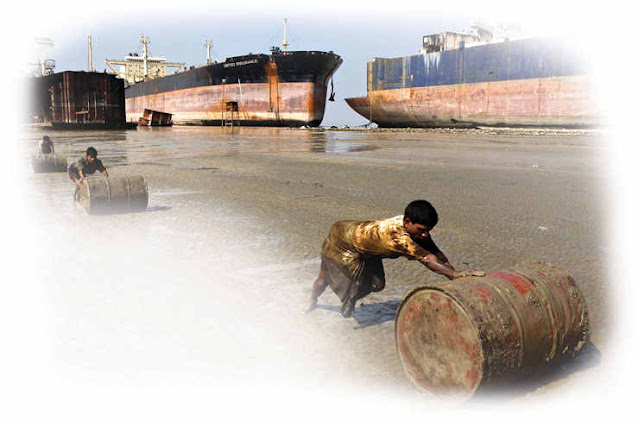11.8.3: The New Economic System and the Old Divisions of Wealth
Suppose that you own a business that manufactures widgets. You are paying your workers $175 a day ($21.83 an hour including vacation pay, sick pay, unemployment benefits, Social Security, and so on). Widgets similar to yours are being manufactured in Thailand, where workers are paid $8 a day. Those imported widgets are being sold in the same stores that feature your widgets. How long do you think you could stay in business? Even if your workers were willing to cut their pay in half—which they aren’t willing to do—you still couldn’t compete. What do you do? Your choices are simple. You can continue as you are and go broke, try to find some other product to manufacture (which, if successful, will soon be made in Thailand or India or China)—or you can close up your plant here and manufacture your widgets in Thailand.
What happens when oil tankers wear out? They go to Bangladesh, where they are turned into scrap. These workers, an expendable part of the global economic system that we are all a part of, are exposed to polychlorinated biphenyls (PCBs), asbestos, and other toxins. For this, they earn $1 a day.
Credit: Andrew Holbrooke/Corbis Historical/Getty Images These are not easy times for workers. One disruption after another. High insecurity with layoffs, plant closings, and the prospect of more of the same. The insecurity is especially hard-hitting on the most desperate of workers, the less skilled and those who live from paycheck to paycheck. How can they compete with people overseas who work for peanuts? They suffer the wrenching adjustments that come from having their jobs pulled out from under them, looking for work and finding only jobs that pay lower wages—if that—watching their savings go down the drain, postponing their retirement, and seeing their children disillusioned about the future. The photo from Bangladesh indicates some of the effects on the workers in the Least Industrialized Nations. 376 What about the wealthy? In these tough economic times, aren’t they being hurt, too? Some rich individuals do get on the wrong side of investments and lose their collective shirts. In general, though, the wealthy do just fine in these challenging times. How can I be so sure of this?, you probably wonder. Take a look at Figure 11.5. Each rectangle on the left of this figure represents a fifth of the U.S. population, about 66 million people. The rectangles of the inverted pyramid on the right show the percentage of the nation’s income that goes to each fifth of the population. You can see that a little more than half (51.5 percent) of the entire country’s income goes to the richest fifth of Americans. Only 3 percent goes to the poorest fifth. Figure 11.5 The Inverted Income Pyramid: The Proportion of Income Received by Each Fifth of the U.S. Population



No comments:
Post a Comment